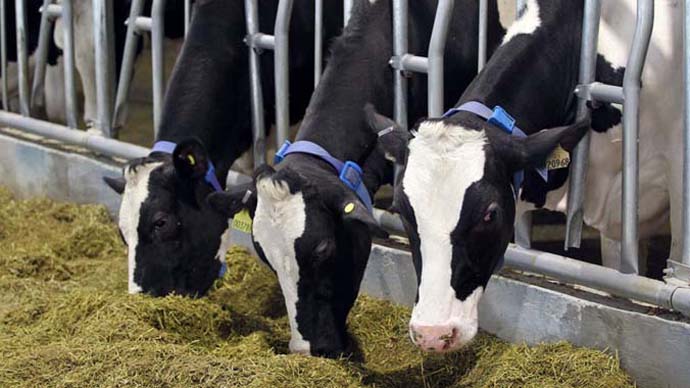How your diet is contributing to global warming

The production of the food through intensive agriculture and livestock rearing, utilises various natural resources and the inputs, becoming a major cause of greenhouse gases.
One of the greatest threats in the history of mankind has been global warming. With the rapid industrialisation and globalisation, the planet today stands on the brink of a catastrophe. The common causes of global warming are already known. However, very few people are aware that our food habits also have a significant impact on global warming. The production of the food that we consume utilises various natural resources and the inputs, becoming a major cause of greenhouse gases (GHG). We will discuss industrial farming and livestock rearing, intensive food production, productivity through the use of fertilisers and pesticides, and the role of non-vegetarianism towards increasing GHG emission and potential ways to curb it.
Globally, factory farming and agriculture activities are accountable for more than 10 per cent of all GHG emission. Unarguably, agriculture-related activities have a fair share in the GDP. In India, it is 16 per cent, as per the World Bank data. While agriculture plays a critical role in our economy, we cannot overlook the way it is carried out. Intensive agriculture and livestock rearing have led to the generation of agricultural pollution and industrial waste. The reasons are manifold.
In the case of agriculture farming, heavy usage of nitrogen and phosphorous fertilisers, pesticides, irrigation methods, soil type, stubble burning has resulted in the toxic release of carbon dioxide, nitrogen oxide (which is a major GHG emitter) and phosphorous in our food, air, soil, and waterways. Better productivity requires modern machines, pesticides, and chemical fertilisers. High-yielding growth certainly happened. But it has a huge impact on our health and ecological factors. In recent years, factory farming has also intensified global warming.

With urbanisation and an increase in disposable income, demand for high-quality protein has increased. This has led to the mass industrialisation of livestock and poultry farming. Food joints like KFC, McDonald’s have become popular for producing tender chicken wings and fast food. Livestock rearing has increased grassland erosion, increase in contamination due to faecal matter releasing carbon dioxide, diverting a portion of grain produced to feed the animals, the release of methane due to enteric fermentation in cows, bulk transportation of meat worldwide, cold storage, manure pollution, antibiotic injected poultry and utilisation of large quantities of water to raise livestock.

As the debate for vegetarianism versus non-vegetarianism lingers on, scientists and environmentalists have been battling on its role towards climate change. USA and China have been leading in GHG emission because of multiple reasons. One of the significant reasons being beef consumption as cows are known to release huge amounts of methane into the atmosphere.
Let us analyse further by comparing food plate ‘A’ which consists of rice, meat (beef or lamb) and soft drinks, with food plate ‘B’ that consists of roti made from bajra or wheat, fruits, pulses and vegetables.

According to an article published in NCBI on GHG emission due to food products, rice contributes to 5.65 kilograms of CO2eq kg−1 rice while meat produces 45.54 kilograms CO2eq kg−1 meat. Mass production of soft drinks requires vast quantities of freshwater resources. Coming to Plate B, the combination of all the food products emits a much lower GHG. If we study the pie-chart carefully, the percentage of food consumption for rice and livestock product or ruminant meat is 30.4 per cent, while GHG emission in case of rice, livestock product and ruminant meat is a whopping 87.3 per cent. It can be safely concluded that the kind of food we consume is directly proportional to the GHG emission. The density of GHG emission is higher in the case of rice and meat combination, which is roughly around 70 per cent.

By the year 2030, there will be a billion more mouths to feed. With improved economic conditions, rising per capita income and longevity, pressure on natural resources on earth will increase.
So what do we do? As bio-scientists and nature management experts look for a greener solution, I will provide my arguments towards remodelling our diet:
1. Permaculture versus monocultural: Monoculture simply means growing a single crop throughout the land. While monoculture farming may be profitable for a farmer, permaculture farming will lead to stronger eco-system as a variety of crops are grown throughout the land. Instead of sowing rice throughout the whole region, cultivation of bajra, jowar and ragi may call for sustainable solutions.
2. Locally-grown vs frozen food: Transportation of food worldwide leads to higher emission of GHG emission. We should consume locally-grown food which is good for both health and climate.
3. Non-vegetarian substitute: Meatless Mondays have been a trend for the past few years. Consuming less meat is certainly going to bring noticeable changes in lowering GHG emission. For high-quality protein, diet alternatives like soy, eggs, chickpeas, tofu may be explored. Naturally-raised livestock may be preferred over industrially reared, as factory-reared beef and lamb consume twice the fossil fuel energy.
3. Taxation of GHG: Government should consider taxing industrial farms, chemical fertiliser, pesticide producing companies for emitting GHG. A subsidy may be given for natural fertilisers. Government bodies may keep a track on carbon emission related to industrialised farming.
The facts presented above throw an insight of how inputs for better yield and intensive livestock rearing can pose a serious threat to global warming. I am reminded of American academic Marion Nestle’s quote: “How we grow food has enormous effects on the environment - climate change as well as pollution of air, water, and soil.”

